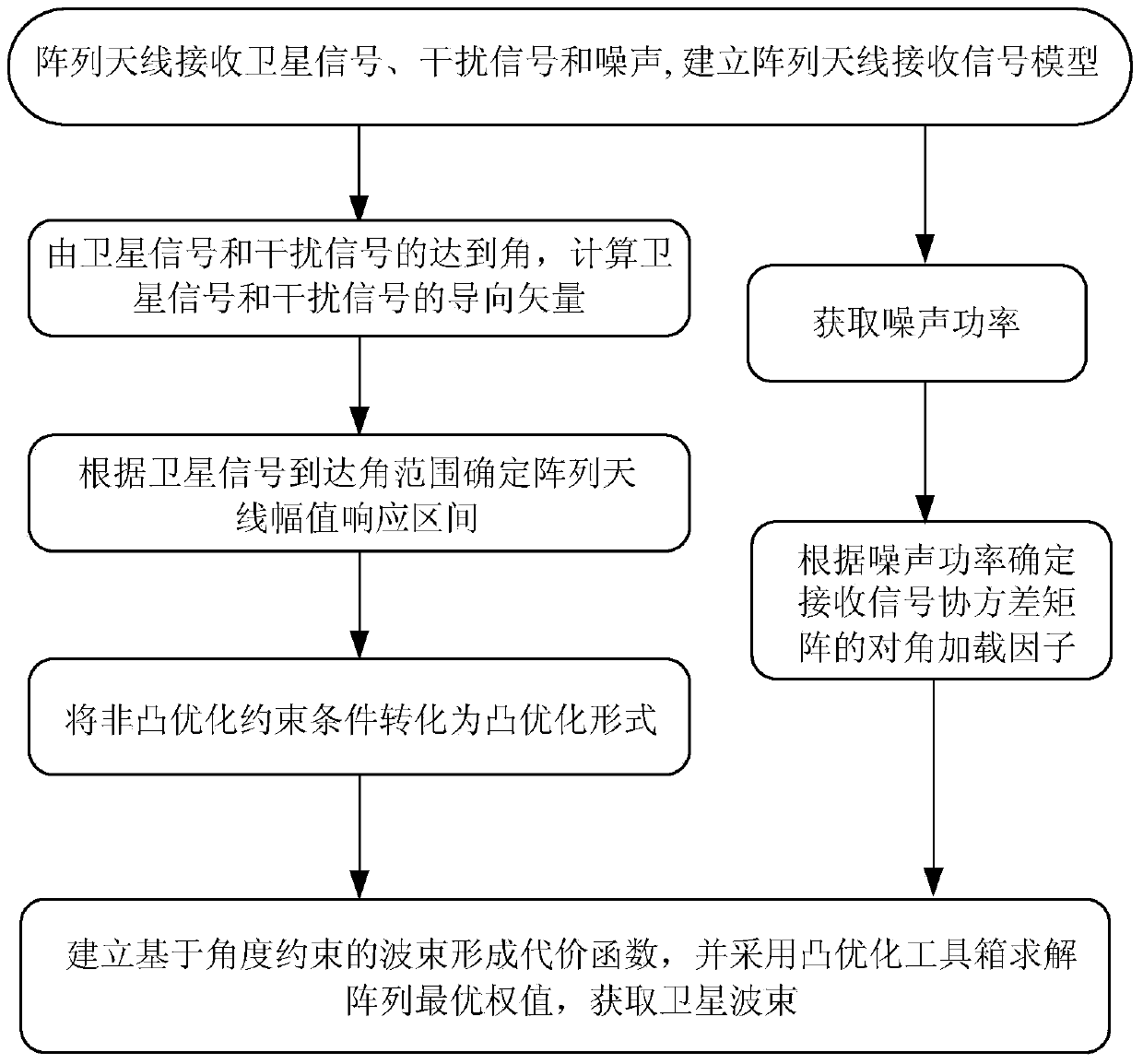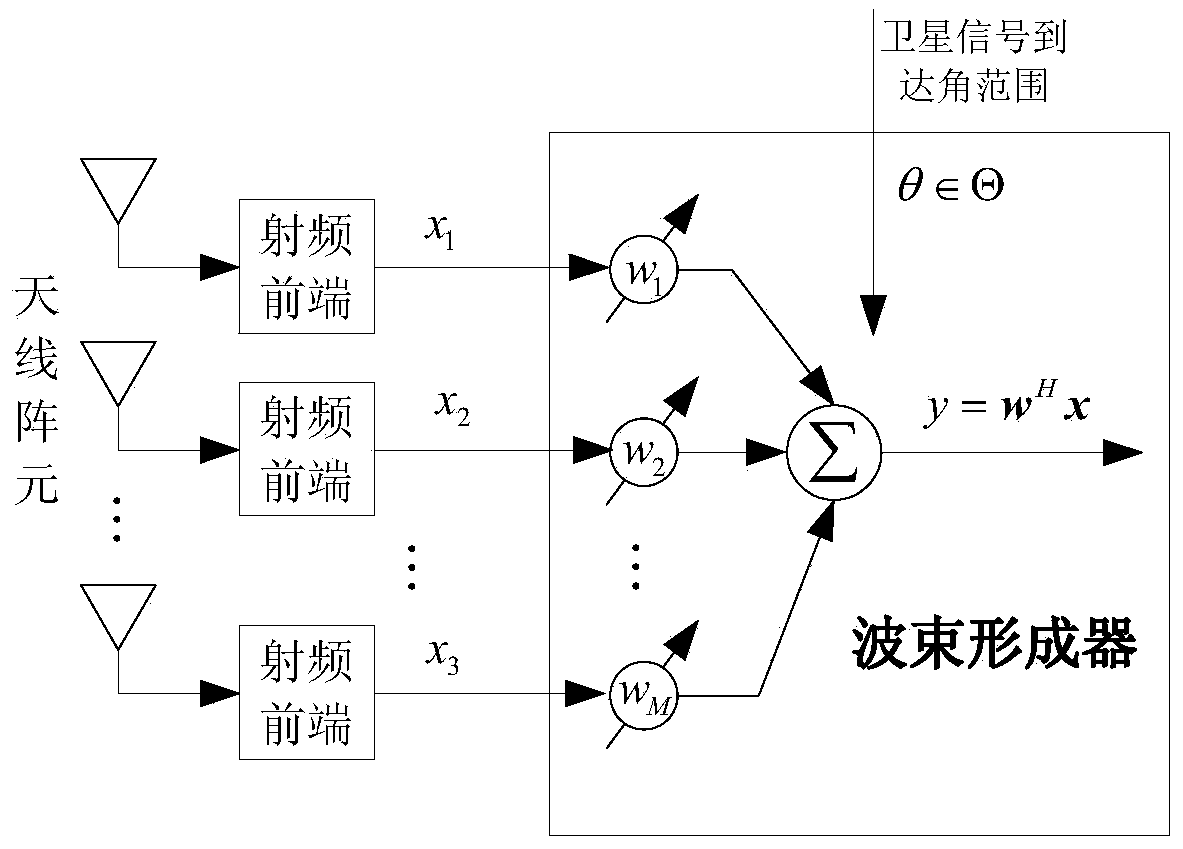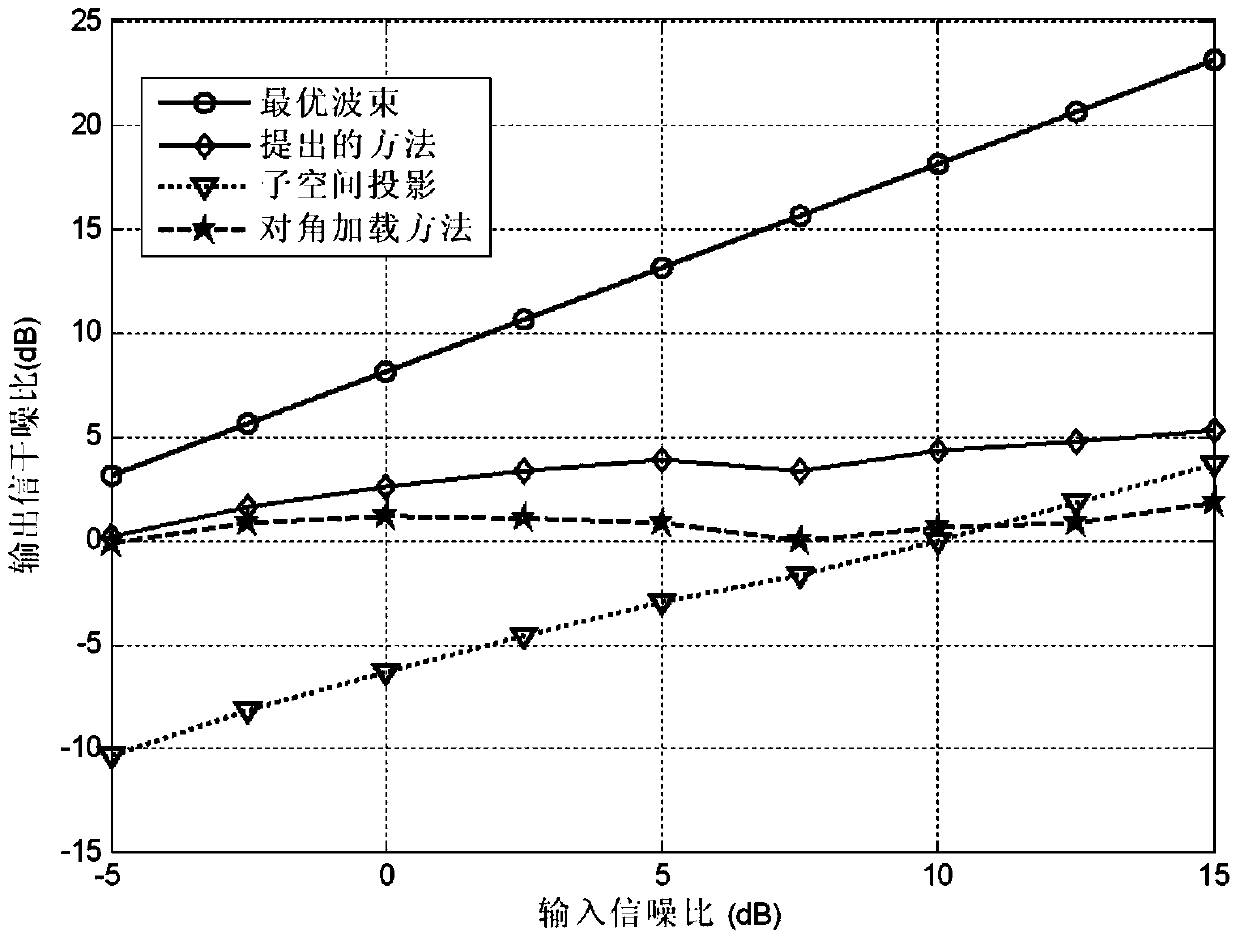Robust beam forming method based on constraint of direction of arrival of satellite signal
A satellite signal and angle of arrival technology, applied in satellite radio beacon positioning systems, radio wave measurement systems, measurement devices and other directions, can solve the problems of inaccurate subspace, constraints of desired signals, and easy distortion of reception of desired signals, and achieve simplification The effect of the algorithm
- Summary
- Abstract
- Description
- Claims
- Application Information
AI Technical Summary
Problems solved by technology
Method used
Image
Examples
Embodiment Construction
[0026] Such as figure 1 As shown, the robust beamforming method based on satellite signal angle of arrival constraint of the present invention comprises the following steps:
[0027] Step 1: Establish an array antenna receiving signal model, and calculate the steering vectors of satellite signals and interference signals;
[0028] 1) The array antenna receives satellite signals, interference signals and space white noise, and establishes the array antenna receiving signal model
[0029] Suppose there are M antenna array elements, and the interval between adjacent array elements is λ / 2, where λ is the wavelength of the GPS signal. Assume that the arrival angles of the desired signal and the interference signal are θ 0 and θ k (k=1, 2,...P), then the received signal of the array antenna can be expressed as
[0030] x ( t ) = a ( θ 0 ...
PUM
 Login to View More
Login to View More Abstract
Description
Claims
Application Information
 Login to View More
Login to View More - R&D
- Intellectual Property
- Life Sciences
- Materials
- Tech Scout
- Unparalleled Data Quality
- Higher Quality Content
- 60% Fewer Hallucinations
Browse by: Latest US Patents, China's latest patents, Technical Efficacy Thesaurus, Application Domain, Technology Topic, Popular Technical Reports.
© 2025 PatSnap. All rights reserved.Legal|Privacy policy|Modern Slavery Act Transparency Statement|Sitemap|About US| Contact US: help@patsnap.com



